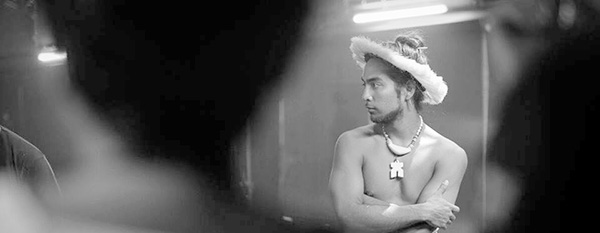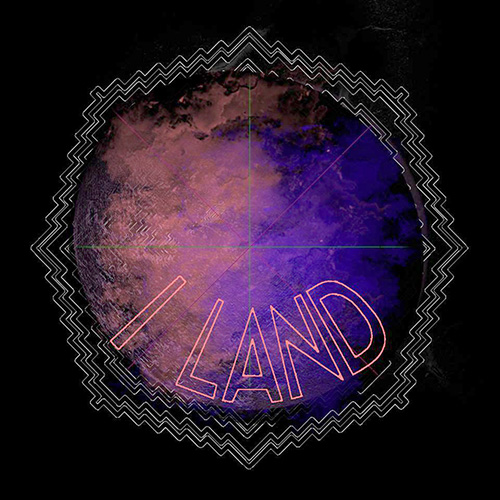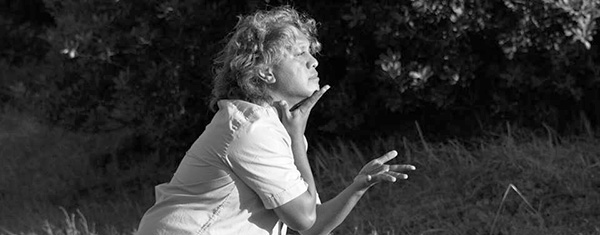The Realization of “Not Knowing” with I Moving Lab
A dialogue with Dåkot-ta Alcantara-Camacho, Jack Gray and Hannah Krafcik; Edited by Hannah Krafcik
“Dance serves as a tool to strengthen a doing of indigeneity – a way of knowing and interacting that both locates knowledge and generates and reinforces methods for knowing and connecting – and thus also serves as a multidirectional force for the world.”
“Manaakitanga in Motion: Indigenous Choreographies of Possibility” by Jacqueline Shea Murphy and Jack Gray, Biography, Volume 36, Number 1, Winter 2013
~~
This past summer, I took an intensive workshop with I Moving Lab, a global arts collective facilitated by Jack Gray – an indigenous Māori contemporary dance artist from Aotearoa (New Zealand) – and Dåkot-ta Alcantara-Camacho – an indigenous Matao contemporary sonic and performance artist from Guåhan (Guam). The two were in Duwamish territory (Seattle) leading the intensive in preparation for their community-engaged project, I LAND. This opened up an opportunity for fellow mover, René Soulier Smith, and I to collaborate with the artists on I LAND (in) Multnomah (Portland, where both René and I are based), which took place August 17-19 of this year.
Working with Jack and Dåkot-ta was unlike anything I had ever experienced. The conversations, inquiry and cultural sharing felt infinite. Both artists brought what seemed to be an unfathomable energy for holding space, speaking and singing, all offered with generosity and piercing timeliness. There was something to the continuity of this work that struck me, and also felt like a clue to my internal questions around practice. The below conversation, which touches on this and much more, took place on my living room floor the last night of their visit.
~~
Hannah: You’ve said, Jack, to not formulate direct questions, which is what I tend to do. In lieu of direct questions as a jumping off point for our discussion, I would like to offer a list of themes that have risen to the surface during I LAND (in) Multnomah. They are:
- Revitalization / Grafting
- What is “known” / What is “knowing” / What is “not knowing”
- Nature as teacher
- Our stories: not leaving them, but owning and inhabiting them
- Training to do the right thing at the right moment, but not knowing what either of those things are
Dåkot-ta: I was really moved by the pairing of “revitalization and grafting.”
Hannah: Jack, I think you mentioned this earlier. The concept of grafting came about because of an apple tree we encountered at the natural dyeing workshop at Emi Otaki Joyce’s house during I LAND. The tree was ill and, in order to support its health and capacity to bear fruit, many other kinds of apple tree branches had been grafted onto it.
Jack: I did, and I think that transcribing it, or remembering it, and then writing it down creates a different energy. It’s an energy that can be a shocking jolt of information to us.
Dåkot-ta: I feel really moved by that analogy or “revitalization and grafting” because it speaks to me about my practices in a way that I had never thought about before. For someone who is “diasporic” (I don’t even like that word, but…) or comes from multiple influences, it’s interesting not to think about this analogy of where the roots in the ground meet but, instead, to be able to feel like there’s a place for one branch to meet another branch (recognizing “this and also this as parts of who I am”), along with this idea that we can mutually give life to each other.
A branch can be cut off from somewhere, and you can still…
Hannah: …graft it back on.
Dåkot-ta: Right, with proper care and understanding of the situation.
Jack: I was saying to someone who joined us for the performance tonight – just proposing this idea – that potentially our ancestors were conspiring a way for us to come into orbit. This idea is almost a way to consider and play with how fate, faith and destiny arrive, and how we can be assured that we’re working in the time that we’re meant to be in – how to really own that, or embody the fullness of that.
There are people looking for their families everywhere and, no matter what stage of this human connection spectrum or process we find ourselves at, there are amounts of equality. That for me is a gift: how much equality I can have with people. It seems to be able to jump the divide that exists when looking at one another from the outside, or the divide between the different continents and worlds that we each come from. This idea of “revitalization and grafting” brings a vision, a desire, an intent, and then a commitment to the application of that.
Jack Gray
Hannah: I think another thing that keeps coming up, too, are notions of process and practice.
Jack: I feel like part of that involves addressing my training as a professional contemporary dancer. There is a part of me that is thankful for the work that I’ve previously been involved in and engaged with. And one of those things has been Atamira Dance Company, and the work that we do as a Māori contemporary dance group.
However, I have had multiple influences and research practices, and I had the realization that one of my greatest passions yet to be lived was to travel the world and to share culture with other indigenous peoples. I recall the sadness I felt upon arriving at Turtle Island (America), because I honestly expected that Native American people could speak their language, know their histories, teach me something, tell me their stories, help me understand how their world was created, and find our familial links all the way back to wherever we all came from. But I found out that they were mistreated and, not only that, they were ignored. They were not even represented and nobody acknowledged them. I don’t know if I’ve ever recovered from that shock, the shock that this could even happen. How could this happen?
This realization had to mean a reevaluation of what was possible. We, as indigenous dancers, cannot focus on performance of ourselves if we are not even performed in society.
I also wondered: Why should indigeneity be connected to injustice? That shouldn’t be the connection. The connection should be that indigeneity is the way in which we can connect ourselves, deeply; a way in which we can know place and space, deeply; and a way in which we can experience the medicines of peoples who have been caretakers and stewards, forever.
It seemed to me, then, in order to perform indigeneity, one must engage in another process – and, in other places and times, people refer to this process as “decolonization.” But that already seems disconnected from the heart of what needs to happen: What needs to happen is that we need to start working through ideas of how we represent the value system of being close to each other, close to the land, close to the things that created us. Share that, be that, acknowledge that – rather than ignore it, and then rediscover and re-construct it.
So, I can’t perform in this country, because all the things that are needed for me to perform don’t exist in people’s minds. Respect for indigenous peoples is not even performed verbally, or in most people’s consciousness. The Lab has been the only way in which we (Dåkot-ta and I) can engage with our concepts and principles. I also believe that I Moving Lab is differentiated from other initiatives (which, I think, is why it is making the type of progress that it is and finding this sustainability for itself), because I Moving Lab is asking questions that bring up that realization of not knowing.
I don’t see not knowing as a barrier. I see it as potential. I see it as the research.
Dåkot-ta: My first interaction with the concept of research was the internet and reading what’s been written. I don’t think I even really understood what research was, and I’m still not sure that I do. But I think the Lab is speaking to this idea that we are in investigation, and that investigation is an experience of expressing and reaching, and also of being still and observing, and allowing, and opening and closing, and experimenting with the accuracy of one’s intuition.
Twice in the past week, we have had engagements with indigenous peoples where it was my role to mediate the negotiation of how we come into another person’s space, or how someone comes into our space. I had to consider how to really honor what people are offering, and then introduce our work in a way that builds a relationship…
The opportunity to understand, and then activate that understanding quickly, in the moment when it needs to happen – that for me embodies what the Lab is. How do you know to speak the words that need to be spoken? How do you know when to speak and when to listen? How do you know when to sing the song, and what song to sing? I guess you can only really know these things by experience.
Dåkot-ta Alcantara-Camacho
Hannah: Speaking of words, I was also reminded how reductive English is, and how it’s been used to ascribe value and meaning, even in dance. I am thinking about a certain mode of production that is predicated in generating “newness” as a commodity – a search for freshness in the moment, which seems entirely unsustainable. This newness does not appear to be aware of its relation to a very long past and a very distant future.
Jack: Yesterday, we were talking about beliefs, and I made the arching statement that my culture doesn’t have a word for “belief.” So, of course, Dåkot-ta googled it. What he found was surprising; the word was Māoritanga, which is like “the way of being.” That is what “belief” is: “the way of being.” So Māoritanga, for me, is all the things in association with the (Māori) worldview. If it is something that has existed within that worldview, it is a part of Māoritanga. But the practice of Māoritanga, and the knowing of Māoritanga could be different things.
I am privileged in that people in my generation have done the work through their own research and through their own sharing, not dispelling things. We can hold space for all beliefs, but if one belief is asserting a type of dominance in a way that is not generative of the balance of the-holding-of-all, we can make different types of spaces around that thing in order to understand its context, and then move in a totally different direction if need be. So, in a sense, Māoritanga is not fixed. It’s fluid. This idea of a belief that’s not fixed, but fluid, feels really resonant for me.
Dåkot-ta: …not to talk about your culture Jack (even though I do it all the time) …
Jack: …because it’s so awesome…
Dåkot-ta: …but the word “Māori”… Heaps of Māori people are like, “We were never Māori.” Māori is a new term that was invented when the British people came. We’re tangata whenua. We’re people of the land. There were also specific peoples, iwis. But then Māori was invented and became useful because they were mobilizing and unifying to work with the Treaty of Waitangi, to get their rights and ways of being recognized. I guess at the end of the day it comes down to what kind of conversation you are trying to have, and what you want to contribute to it.
~~
From here, our conversation continued late into the night. We talked more about questions swirling around the term “indigenous” (explored further in the article quoted above). Jack and Dåkot-ta shared more words from the languages of their cultures, and they underscored the importance of amplifying indigenous voices and honoring those voices with crystal clarity. If you would like to know more about this work, please visit www.imovinglab.com and see their latest project, Indigenous Stamina: Tactics and Revelations.



2 Responses to “The Realization of “Not Knowing” with I Moving Lab”
honor friends,
beautiful article and conversation! so much gratitude flows with the articulation and transmission of research and lived experience! our summer dance in the park fountain near the salish sea vibrates~~~ Water~~~ yes, beginning and continuing….til then….
big hugs,
karen
Kia ora and Ngā mihi Hannah for your work in giving space to our weekend with you all. It was amazing to be there in Multnomah land and to learn/share/exchange in multiple ways. Till next time!!x
Comments are closed.